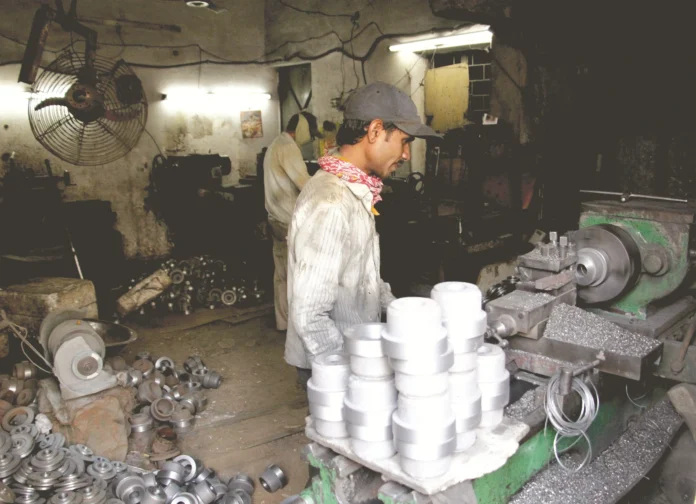In July 24, Finance Minister Nirmala Sitharaman issued a new system for facilitating continuation of bank credit to micro, small and medium enterprises (MSMEs) with strained loan accounts. Banks are required to identify initial stress in the account by building a sub-asset category called Special Mention Accounts (SMA), before a loan account change into an non-performing asset (NPA). An account is conveyed to this category once the earliest signs of ailment or distortion in loan reparation are identified.
The Federation of Indian Micro Small and Medium Enterprises have welcomed the announcement of a capital to help stressed MSMEs under the SMA category. The planned mechanism is likely to bring comfort to stressed MSMEs that have faced difficulty in engaging existing credit lines to pay their dues. Banks are required to identify initial stress in the account by building a sub-asset category called SMAs, before a loan account change into NPA.
An account is conveyed to this category once the earliest signs of ailment or distortion in loan reparation are identified. Under the new mechanism, banks will do credit evaluation of an MSME based on its digital trail and not on the balance sheet.
The new credit assessment model in Budget 2024-25 includes the following:
- Public sector banks (PSBs) will create their own in-house capability to gauge credit for MSMEs instead of relying on external assessment.
- PSBs will develop a new credit assessment model based on the scoring of digital footprints of MSMEs in the economy.
- The new model is expected to be a significant improvement over the conventional assessment of credit eligibility based only on asset or turnover criteria.
- The new model will also cover MSMEs without a formal accounting system.
- A credit guarantee scheme will be announced for ease term loans without third-party collateral to MSMEs for purchase of machinery and equipment.
- A new mechanism for facilitating continuity of credit support to MSMEs during stress periods will be introduced.
The finance minister, in Budget 2024-25, announced that PSBs will frame their in-house competence to assess MSMEs for trust instead of relying on extrinsic assessment.
Under the new model, banks will consider utilization or spending patterns of individuals while making their credit assessment. At present, only salaried individuals or tax filers can access home loans from banks due to documentation demand. Under the upcoming plan, banks will consider spending patterns from consumption data to decide creditworthiness of non-salaried applicants as well. Digital footprints like utility bills, bank statements, or salary credits paid to employees can showcase businesses transacting without the burden of conventional documents. Banks looking into such electronic payment footprints intent to assist the progress of loans for a wider segment.
By tapping latent transactional details, it could turn advantageous for small enterprises and individuals currently found ineligible due to incomplete papers. Similar to the MSME model, the housing option aims to reduce reliance on formal records alone.
With extending digitalization enabling electronic footprints, the ploy is timely in recognizing alternate ways to check financial clients. Protecting data privacy, it looks for judging credit-worthiness by way of actual spending clues instead of contrary existing criteria.
If implemented securely, the innovative scheme promises extending loan access to applicants who may be financially sound despite non-salaried occupations or flawed tax filings. Its outcome, however, would rely on careful assessments of alimentary low awful debts.
A home loan placed on a digital footprint refers to a lending process that uses an individual’s online data and digital activities to assess their creditworthiness and approve a home loan. This approach considers various digital factors, such as:
- Profiles in social media platforms.
- Online search history.
- Email and messaging apps usage.
- Transactions in e-commerce.
- Mobile phone usage and location data.
- Credit bureau data.
- Online banking and financial transactions.
Lenders use advanced analytics and machine learning algorithms to analyze this digital data and generate a credit score. This score helps lenders evaluate the borrower’s creditworthiness and make informed decisions about loan approval, interest rates, and terms. Lenders can use digital footprint data to assess creditworthiness and give loans to individuals or businesses without a traditional credit history. Companies can offer services and recommendations based on online behaviour and preferences. It also helps verify identities and prevent fraud. Employers can also use digital footprints to assess a candidate’s online existence and professionalism, while businesses can analyse digital footprints to understand consumer behaviour and preferences.
However, there are also concerns about data privacy and security, favouritism in algorithms and decision-making and paucity of transparency in credit scoring. Some fintech companies and lenders have already proposed digital footprint-based home loans, and this flow is expected to grow as technology advances and data analysis improves.
—By Shivam Sharma and India Legal Bureau


